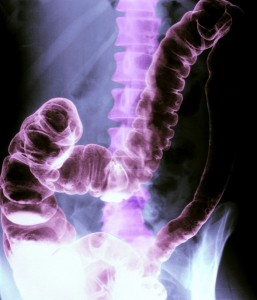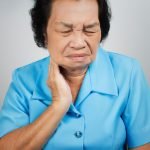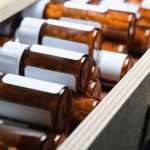Supporting the Treatment of GI Disease with IV Therapy
 Dan Carter, ND and Virginia Osborne, ND
Dan Carter, ND and Virginia Osborne, ND
The current Merck Manual lists 14 main gastrointestinal disorders, with up to 14 subdivisions within each of the principle groupings (Beers, 2006). Add to this the finding that many other disease states affect the gastrointestinal tract significantly, and both give us a strong reminder that our gut has a major influence on our health. Intravenous (IV) therapy can be a useful adjunct to the oral treatment of gastrointestinal diseases.
By the time symptoms of disease have made their appearance, it is sometimes too late for oral vitamins and minerals to make much difference. Nevertheless, these same vitamins and minerals, given intramuscularly (IM) or intravenously, can benefit many diseases. At first glance, this looks like a contradiction. If nutrients can be used to handle disease, should it matter by which route they enter the body? We would like to explore in this article the benefits of using IV method for GI cases.
We know that the health of the GI tract affects the overall health of all body functions and the well being of every individual. We approach the problem of disease as a problem of the cell. What the cell needs to be maximally healthy is always found in nature. However, to be effective, these nutrients must be admitted into the cell.
When given in high concentration, IV or IM nutrients enter the cell by sheer force of numbers. Administering nutrients in a concentration great enough to force those nutrients into the cell by means of a high-concentration gradient and the ability of the cell wall to absorb without expending its energy on active transport is highly beneficial. Highly concentrated on the outside, the semipermeable cell membrane admits the nutrients into the cell due to the high-concentration gradient that has been created.
The only way to obtain this high concentration is by IV or IM administration. With the GI cells, we observe that the transport and absorption cannot occur fast enough to have a high-concentration gradient for the remainder of the body. The IV route is especially useful for this purpose, because little time is required for absorption from an injection site as within a muscle. When oral absorption is not effective, the parenteral route proves most beneficial.
The accompanying case studies illustrate the wide diversity of causes and treatments for gastrointestinal complaints.
Case Study 1
A 59-year-old female presented with an acute flare-up of chronic diverticulitis. She was first diagnosed nine years ago and typically had acute flare-ups every 4-6 months, but recently the recurrences had been more frequent. She was hospitalized in 2002 for a particularly severe episode. Her last doctor visit was two weeks prior to this visit and she was prescribed antibiotics for 10 days, during which time probiotics were taken between antibiotic doses. She had an appointment scheduled in four days with her gastroenterologist for a colonoscopy; he suggested that surgery may be the best treatment for her condition. He also wanted her to go back on antibiotics, which she would prefer not to do.
Physical examination revealed moderate tenderness in her LLQ. Vital signs were within normal limits.
Prevention and treatment rationale: IV therapy to treat current infection. A whole-food, high-fiber diet with sufficient water intake helps prevent the occurrence of diverticulosis. Exercise is also a valuable preventive. The frequency of diverticulitis episodes can be lessened by avoiding substances that contribute to bowel inflammation, such as processed foods or foods one is sensitive to, and by eating foods and taking supplements that are soothing and anti-inflammatory to the gut.
IV therapy to help eliminate infection was administered in-clinic. The protocol used included 15g ascorbic acid, 10mg zinc sulfate, 400µg selenium, 1000mg calcium as 10mL calcium gluconate, 1000mg magnesium sulfate and 1mL B-complex; the nutrients were added to a 500mL bag of 0.45% saline and administered over two hours.
Oral treatment was started immediately using the following supplements:
- A fortifying supplement to support overall GI function, 1 scoop 2-3 times daily until symptoms resolve. Product includes fiber and herbs that are soothing and healing for the bowel (psyllium powder, flax seed powder, L-glutamine, DGL, marshmallow root, unripe plantain, slippery elm and fruit extracts).
- Cod liver oil, 2Tbsp daily until asymptomatic, 1Tbsp daily as maintenance. Cod liver oil is an anti-inflammatory and facilitates healing.
- Ginger tea, 2-3 cups daily. Either grate fresh ginger into a cup of hot water or use commercially available ginger tea bags. Ginger is anti-inflammatory and improves digestion.
A follow-up phone call was made two days later, and the patient stated that she felt 70% better and had cancelled her appointment with the gastroenterologist.
She came in the following day for a follow-up IV therapy infusion using the same protocol. After two weeks she was experiencing no symptoms. Over the following three months she felt well and used the fortifying supplement whenever mild symptoms returned. The patient was then put on a maintenance program with preventive measures:
- Psyllium powder, 1-3 tsp mixed in 8-12 ounces water once or twice daily. An additional glass of water to be consumed after taking psyllium. Psyllium is effective in relieving symptoms associated with diverticular disease and constipation (Leahy et al., 1985).
- Fortifying supplement, prn at first appearance of symptoms.
- Curcumin, 500mg, 1 capsule twice daily with meals. Curcumin is a constituent of the spice turmeric. It is anti-inflammatory, improves liver health, helps prevent bowel cancer and helps decrease the amyloid plaques found in Alzheimer’s disease (Cruz-Correa et al., 2006; Ng et al., 2006).
- Vitamin D3, 2000IU daily. Vitamin D is extremely important for normal immune function (most of our lymphatic tissue is associated with the gut), cancer prevention, normal cardiovascular health and nerve health.
- Cod liver oil, 1Tbsp. daily.
- Probiotics, live culture, 1 capsule twice daily. Essential to maintain bowel health.
After six months, the patient remained asymptomatic.
Case Study 2
A 75-year-old female presented with symptoms of gastritis, including nausea without vomiting, pain, belching, bloating and burning feeling in stomach, loss of appetite, foul taste in mouth and occasional diarrhea. Her GI symptoms have built up over the last month. She also admits to generalized muscle pain. Her diet is organic whole food, all of which she and her husband grow and raise on their farm. Her recent medical history includes fatigue, weight gain, poor sleep and diminished cognition. Her blood pressure was low (97/69) and other vital signs were normal. Abdominal exam showed tenderness, without rebound tenderness, in the upper quadrants. Lab tests were ordered, including CBC, comprehensive metabolic panel (CMP) with lipids, stool culture with ova and parasites, stool occult blood and Helicobacter pylori antibody test.
The patient was prescribed IV micronutrient therapy once weekly for three weeks to support basic nutrition and immune system health. The IV also addressed muscle pain, and consisted of: 7.5g ascorbic acid, 10mL 10% calcium gluconate, 2000mg magnesium sulfate, 5mL potassium chloride (2mEq/mL), 1mL multi-trace element concentrate (5mg zinc, 1mg copper, 0.5mg manganese, 10µg chromium), 100mg pyridoxine, 250mg dexpanthenol, 1000µg hydroxocobalamin, 1mL B-complex and 200mg taurine. The nutrients were added to a 500mL bag of normal saline and administered over two hours.
Immediate oral treatment included DGL tabs prn and a demulcent tea containing two parts Symphytum officinale radix finely ground, two parts Althaea officinalis, one part Hydrastis canadensis and one part Melissa officinalis. One tablespoon of the tea blend was mixed with 8 ounces hot water and used four times daily. L-glutamine powder was also recommended, 1 rounded teaspoon three times daily between meals and at bedtime.
The lab results were received in two days and those of note were: CBC showed a normal WBC count and absence of anemia. CMP revealed a fasting glucose of 120, TSH of 4.59 and other values normal. Stool culture showed no pathogens, no ova or parasites and negative occult blood. H. pylori antibody was positive.
The patient did not want antibiotics. She started an oral treatment to eliminate H. pylori and was instructed to follow the program for three weeks.
- Mastica, 500mg, 2 capsules twice daily between meals. Mastic gum has been shown to inhibit the growth of H. pylori (Huwez et al., 1998).
- Bromelain, 375mg, 2 capsules three times daily between meals. Bromelain is synergistic with mastic gum.
- Bismuth subsalicylate, dose according to directions on bottle and take one dose three times daily before meals. Bismuth salts inhibit the growth of H. pylori and binds or neutralizes the toxins of the bacteria, rendering them non-irritating. It decreases intestinal inflammation and increases the activity of intestinal muscles and cells. (Bonagura and Dabezies, 1996; Stratton et al., 1999).
- Green tea, 3 cups daily. Epigallocatechin gallate (EGCG), the main polyphenol of green tea, has been shown to inhibit H. pylori-induced expression of the proinflammatory cytokines and tumor necrosis factor (TNF)-α (Stratton et al., 1999; Yanagawa et al., 2003; Fujiki et al., 2002; Lee KM et al., 2004).
Since the patient’s TSH was greater than 2.0, she was prescribed 30mg natural desiccated thyroid once daily before breakfast.
After three weeks, her GI symptoms had resolved, muscle pain had decreased by 50% and her energy level was improving. To maintain good digestion, she was instructed to drink 1-3tsp apple cider vinegar prior to meals and to use bitters as well.
Case Study 3
A 27-year-old female presented with ulcerative colitis and extreme fatigue of two years’ duration. Symptoms came on abruptly while in daily swim practice in 2005. Previous to illness, the patient was pursuing law school and swimming up to five hours a day. In the past two years, she had been to four gastroenterologists and had undergone upper and lower GI studies with biopsy, which revealed marked inflammation and colitis in the large intestine and inflammation of the esophagus consistent with reflux; final comment, “However, infectious etiologies should be excluded.” Medications of mesalamine, bupropion hydrochloride, escitalopram oxalate and prednisone were initiated two months prior to her visit in our clinic.
At a previous visit with an ND, GI health and thyroid panels were done. She was referred for EAV testing to assess food intolerances and IV therapy to address fatigue. Patient was receiving acupuncture for pain in the LUQ of the abdomen and reported the therapy to be “very helpful.”
Upon presentation to us, the patient was obviously quite fatigued; lethargic; very pale; and exhibiting slight, uncontrollable muscle tetany, which she reported as a new symptom. Other symptoms included bloating, episodes of bloody diarrhea, excessive sleeping, night sweats, activities of daily living significantly affected by fatigue, anxiety, depression and recurrent UTIs. She also reported a fever of 100 degrees Fahrenheit (F) for the past year. She was unable to work, continue her education or be physically active, and ultimately had to move in with her mother to be cared for. Her past medical history included cholecystectomy for unknown reasons.
IV therapy to address fatigue, malnutrition and lack of absorption was administered. The protocol included 500mg dexpanthenol, 200mg pyridoxine, 10mg hydroxocobalamin, 200mg B-complex, 1g vitamin C, 100mg calcium gluconate, 800mg magnesium chloride, 149mg (2mEq) potassium chloride, 400µg selenium, 200mg germanium, 10mg zinc and 20mg folate. All nutrients were added to 500mL of 0.45% saline and administered over two hours.
The patient’s fatigue decreased moderately with weekly IV therapy. Adrenal insufficiency was suspected, and an Adrenal Stress Index (ASI) was ordered. Previously ordered blood work showed a normal TSH, normal free T4 and slightly lowered free T3 – presumably from the two years of illness. Ferritin was also low. The patient was placed on the following supplements per previous doctor: Iron citrate 25mg bid and glandular thyroid replacement (1/4grain before food in the morning), which she discontinued after some weeks, as she felt no improvement. She also began eliminating offending foods determined by EAV testing from her diet.
Within three weeks, the ASI showed normal to elevated adrenal function. However, the GI panel showed significant infection and dysbiosis. Organisms included light Candida albicans growth; moderate yeast on stool culture; moderate Enterococcus species; positive toxoplasma Ab (SIgA); borderline H. pylori Ab (SIgA); detected levels of Ascaris lumbricoides and T. solium; lowered total intestinal SIgA (stool); elevated intestinal lysozyme; significantly elevated alpha anti-chymotrypsin; lowered chymotrypsin; and positive antibodies for milk, soy and gliadin.
The patient continued weekly IV therapy and was immediately started on the following oral supplements:
- A product that includes berberine, gentian root, black walnut hull extract, sweet wormwood and other botanicals, 2 caps tid between meals. This is proven to exhibit activity against many intestinal organisms.
- Lipotropic product, 2 caps tid with meals. It includes liver supportive herbs, nutrients and bile salts to assist the body in dealing with any die-off reactions and to support the body in further detoxification.
- Product containing plant enzymes, 2 caps with meals. This product assists with decreased pancreatic output.
- Intestinal repair powder, 2 tsp tid with meals. Comprised of mucilaginous herbs, amino acids and enzymes, it supports intestinal healing, decreases inflammation and restores GI structure.
- A hydrolyzed fish protein concentrate, 2 caps tid between meals. This concentrate is for intestinal health.
At a follow-up appointment one week later, the patient was feeling significantly better. Her pallor was diminished, her lethargy was markedly decreased and she stated that she felt her life had been given back to her.
Within three weeks she was no longer exhibiting GI symptoms. Other than waves of flu-like symptoms as Herxheimer reactions occurred, she reported feeling better than she had in years. “It’s like death and life.” Bloating was absent; sleep hours had regulated; ulcerative colitis episodes had not occurred “in weeks”; and bowel movements were well formed and had increased to 2-3/day (up from one episode of diarrhea daily). The patient had begun light exercise and was able to participate in activities of daily living once again. Recent lab work showed a lowered serum 25,OH vitamin D of 43ng/mL initiating emulsified vitamin D, dosed at 10,000 IU/day for 1 month as well as a multi-vitamin, 2 caps tid.
At a follow-up appointment one month later: serum lab testing to assess ferritin, serum vitamin D, CBC, CMP, thyroid function and GI health panel.
Dan Carter, ND, graduated from NCNM in 1994 and completed a two-year family practice residency at the college. He was appointed to a full-time faculty position in 1997 and set up the teaching clinic’s IV therapy clinical practicum the following year. He also established an environmental medicine program in the school’s clinic. Dr. Carter is an instructor for IV nutritional therapy for physicians seminars, teaching since 1991. The workshops provide complete training to physicians internationally for the safe and effective use of IV nutrient therapies. Dr. Carter is also certified by ACAM to administer chelation therapy.
Virginia Osborne, ND is a graduate of NCNM. She is part of the adjunct faculty at NCNM in IV therapy and environmental medicine, and lectures internationally on IV and EDTA therapies. Osborne has a clinical practice in Portland.
References
Beers Mark H: The Merck Manual of Diagnosis and Therapy (18 ed), Whitehouse Station, 2006, Merck & Co., 62-65.
Leahy AL et al: High fibre diet in symptomatic diverticular disease of the colon, Ann R Coll Surg Engl 67:173-4, 1985.
Cruz-Correa M et al: Combination treatment with curcumin and quercetin of adenomas in familial adenomatous polyposis, Clin Gastroenterol Hepatol 4(8):1035-1038, 2006.
Ng T-P et al: Curry consumption and cognitive function in the elderly, American Journal of Epidemiology Advance Access published online on July 26, 2006: http://aje.oxfordjournals.org/cgi/content/abstract/kwj267v1.
Huwez FU et al: Mastic gum kills Helicobacter pylori, N Engl J Med 339(26):1946 Dec 24, 1998.
Bonagura A and Dabezies M: Helicobacter pylori infection, Postgrad Med 100(5),115-6,119-20,123-4, Nov. 1996.
Stratton CW et al: Bismuth-mediated disruption of the glycocalyx-cell wall of Helicobacter pylori: ultrastructural evidence for a mechanism of action for bismuth salts, J Antimicrob Chemother 43(5), 659-66, 1999.
Yanagawa Y et al: A combination effect of epigallocatechin gallate, a major compound of green tea catechins, with antibiotics on Helicobacter pylori growth in vitro, Curr Microbiol 47:244-9, 2003.
Fujiki H et al: Involvement of TNF-alpha changes in human cancer development, prevention and palliative care, Mech Ageing Dev 123:1655-63, 2002.
Lee KM et al: Protective mechanism of epigallocatechin-3-gallate against Helicobacter pylori-induced gastric epithelial cytotoxicity via the blockage of TLR-4 signaling, Helicobacter 9:632-42, 2004.









